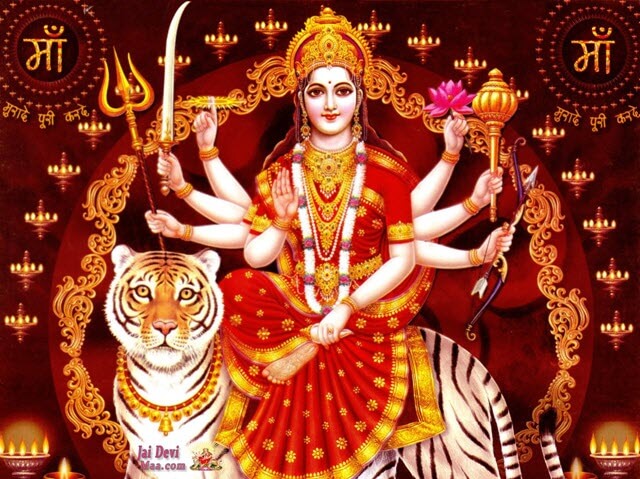The Divine Mother is worshipped so as to lift one’s consciousness from the level of materialism to that of divinity. During the auspicious period of Gupta Nav Raatri, which begins on June 29, 2022, the sincere aspirant worships the Divine Mother, engaging in various forms of tapasya (austerities), leading to a heightened spiritual state. In this journey, the material world, a world of illusion or Maayaa Shakti, is transformed to the energy of consciousness or Chid Shakti.
This journey begins by acknowledging that shakti is the energy that guides the major activities of life: creation, sustenance, destruction and re-absorption. Five forms of energy activate these systems at the macrocosmic level. They also exist within each individual at varying levels of awareness. These forms of energy are:
- Chid Shakti: Energy of Consciousness
- Aanand Shakti: Energy of Bliss
- Ichhaa Shakti: Energy of Will
- Gyaan Shakti: Energy of Knowledge
- Kriyaa Shakti: Energy of Action
The worship of Devi brings an increased awareness of these forms of energy, gradually lifting the aspirant to the state of Chid Shakti. In this state of heightened consciousness, the devotee is then imbued with a peaceful and blissful energy that guides his intent and actions towards a positive, virtuous, pure and sattvic (pious) state of mind. One is imbued with wisdom, which translates into appropriate, righteous activities.
There also ten forms of Devi that represent the ten types of transcendental knowledge and the powers enshrined within them. A deeper understanding of this knowledge steers one towards the development of positive behavioural patterns.
The ten forms of transcendental knowledge and the qualities inspired by them are as follows:
- Kaali Devi – She represents the power of time and the night of eternity. She removes the veil of ignorance that draws the mind towards desires, materialism and worldly attachments. The devotee develops an attraction towards the spiritual; the Devi inspires inner stillness and silence. This form acknowledges the power and control that time has on creation, sustenance and destruction in the macrocosmic and microcosmic spheres.
- Taara Devi – the power of hunger. The devotee develops an attitude of rising beyond all limitations and has compassion for others in recognizing that the source of life is hunger and that the universe survives by consumption.
- Shodasi Devi – the personification of perfection. The devotee strives towards attaining a sense of excellence and auspiciousness in all tasks.
- Bhuvaneshvari Devi – the power of knowledge. The devotee develops an urge to reach beyond the limitations of human life and aspires towards true self-knowledge.
- Bhairavi Devi – the power of death. She removes ignorance, the fear of death and all forms of darkness from within.
- Chinnamasta Devi – the power of sacrifice. Her worship allows the devotee to develop self-sacrifice, self-control and courage.
- Dhumaavati Devi – the power of poverty. She helps one to aspire towards renunciation, having recognized that unpleasant experiences engender a sense of disgust in the material world.
- Maatangi Devi – the power of domination. She teaches that peace, prosperity and success are derived from self-control and power over one’s self.
- Bagalamukhi Devi – the power of cruelty. She teaches one to rise above qualities of deceit, to control the tongue, to go within and take control of one’s innate power.
- Kamalaa Devi – the power of wealth. She helps one to constantly strive towards attaining a state of divine splendour and inner worth.
Austerities of Devi worship, carried out during the festivities of Nav Raatri, afford each individual the opportunity to acquire these spiritual qualities and lift one’s level of consciousness to the state of Chid Shakti, the energy of consciousness.



